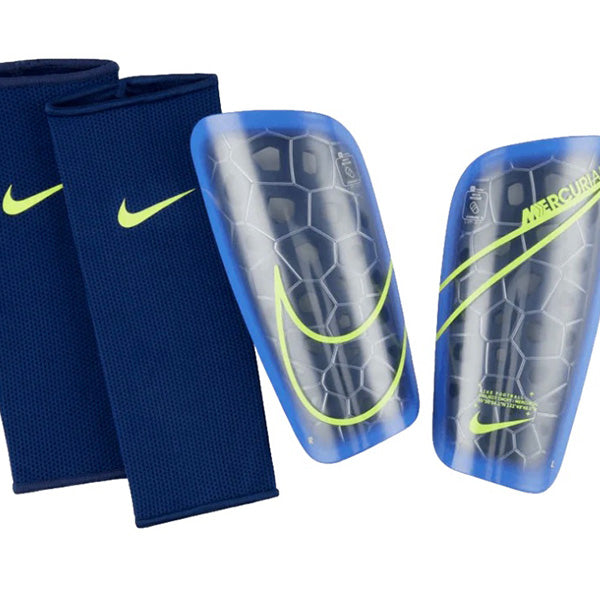Al jugar al fútbol, las espinilleras son tan importantes como el balón. Las espinilleras se utilizan desde el momento en que se empieza a jugar al fútbol hasta el último segundo en el campo y su función es proteger a los jugadores de abrasiones, contusiones y fracturas en la parte inferior de la pierna.
La espinillera tiene dos lados: la cubierta exterior y la carcasa interior. La cubierta exterior es de un material duro, como el plástico de polipropileno, lo que crea un exterior duro para ofrecer más protección. La carcasa interior es un acolchado de espuma de baja densidad con alta absorción de impactos, lo que permite que la espinilla esté en contacto con algo más suave que el plástico y, al mismo tiempo, brinda protección.
Algunas también están hechas de fibra de vidrio, que proporciona una capa de protección rígida, resistente y liviana. Las espinilleras también pueden estar hechas de goma espuma, que es menos protectora y resistente, pero es más liviana que la fibra de vidrio.
Hay tres tipos diferentes de espinilleras, pero dos se utilizan más que el tercero.

Las espinilleras deslizables son la versión más pequeña y liviana de las espinilleras, ya que solo cubren la espinilla. Por lo general, vienen con mangas de compresión, pero no es necesario usarlas. Una media ajustada, una manga de compresión o una cinta mantendrán estas espinilleras en su lugar. Los jugadores más avanzados pueden usarlas, ya que brindan menos protección que otras versiones. Este tipo de espinilleras también permiten una mayor libertad de movimiento.

Las espinilleras de longitud completa tienen el mayor nivel de protección porque cubren la espinilla y el tobillo. Estas espinilleras tienen una correa elástica en la parte superior de la espinillera y un material que envuelve la parte inferior del pie para mantener la espinillera en su lugar. Tener este material alrededor de la parte inferior del pie significa que habrá material adicional que cubra el tobillo, lo que brinda más protección. Si un jugador quiere tener una espinillera de longitud completa pero no le gustan las tobilleras, existen tobilleras extraíbles de ciertos tipos.
Dado que esta espinillera proporciona la mayor protección, muchos jugadores jóvenes la eligen por la protección adicional. A los padres les gusta esta opción para sus hijos porque les preocupan las lesiones, ya que son las mejores para prevenirlas.

Las espinilleras, las menos populares de las tres, son medias de fútbol y espinilleras combinadas en una sola.
Al usar espinilleras, deben quedar a una pulgada por debajo de la protuberancia justo debajo de la rodilla y terminar una o dos pulgadas por encima del tobillo. Jugar con espinilleras que son demasiado grandes o demasiado pequeñas puede generar problemas al correr, resultar incómodas y brindar menos protección.
Los centrocampistas pueden usar cualquiera de estas espinilleras. Si eres un centrocampista que busca espinilleras, depende de tu estilo de juego. ¿Eres un centrocampista defensivo al que le gusta hacer grandes entradas o eres un centrocampista ofensivo al que le gusta correr hacia espacios libres? De cualquier manera, todas estas opciones de espinilleras son aptas para cualquier posición.
Las espinilleras son una de las piezas más importantes del equipamiento en el fútbol, asegúrate de tener las adecuadas para ti.



